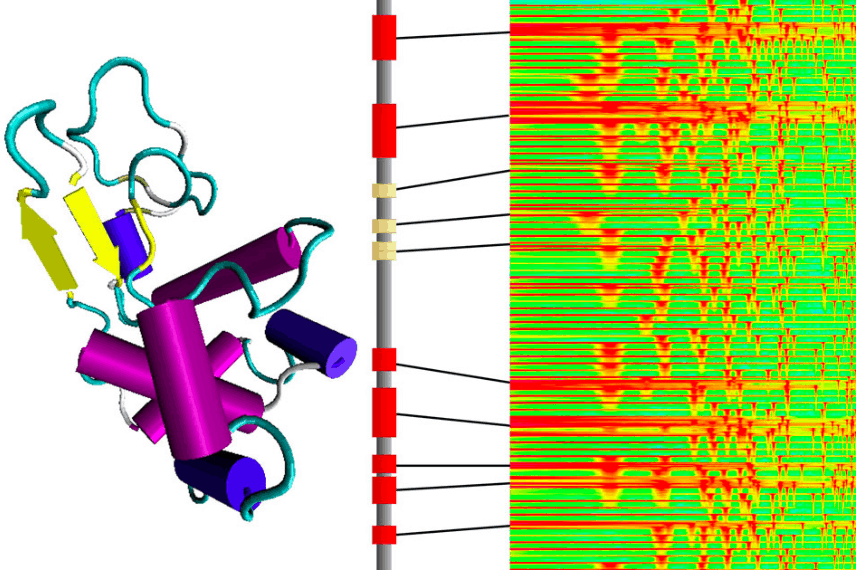“A molecule is never static, but is constantly moving”, explains Professor Markus Buehler, coordinator of the research, “Every bit of matter is a set of vibrations. And we can use this concept (i.e. quantum state, editor’s note) as a way of describing matter, through a musical translation that turns these frequencies into sounds audible to the human ear”.

Translation between music and protein structure devised by MIT researchers
The sounds they obtained appear rather bizarre, but they have their own harmony, to the point that, for example, it is possible to distinguish if the structure of a protein is more like a helix or a sheet (two of the most frequent structures of proteins in musical space). To take a further step, after having obtained a series of melodies from as many proteins, the researchers from MIT entered all the collected information into a supercomputer, and instructed the “machine” to also generate hypothetical melody variations (proteins), working with artificial intelligence systems on the possible combinations, which amount to trillions of trillions (impossible to study, therefore, for any human brain). All of this may help us to better understand how the proteins actually used by the human body work, or don’t work.
In fact, a lot of data is still missing, at international level, on other essential characteristics of proteins and their variants, such as, for example, those concerning elasticity, which also changes considerably following the individual replacement of amino acids. Hence, the platform set up by MIT must now be adjusted and optimized to ensure that true sonatas can be made out of the rather abnormal tones of the individual melodies (like the current description of numerous proteins) or in the future even entire symphonies, i.e. totally faithful protein reconstructions.
In the meantime the system can also be used as a creative basis for composing sounds deriving directly from biology: with this in mind the researchers have created a specific app called Amino Acid Synthesizer, which enables users to make their own music using these 20 unusual “notes”.

